Properties Overview
Properties is a term that broadly relates to many of the values and attributes attached to items. Examples of properties include flashpoint, colour, stability, purpose, hazard pictogram, signal word. Project properties are properties which relate to projects and tasks, they are similar to item properties, but are simpler and are not discussed in this article.
The application comes pre-loaded with many properties and they can be seen in the Properties tab of raw materials and formulations. Properties are organised into Property Groups which typically hold related properties.
Using Properties
Some property values are added directly to raw materials and formulations such as colour and appearance. Other properties are calculated by the software, for example GHS hazard statements. In addition to storing and calculating information, a few key uses of properties are:
- In the content of documents such as Safety Data Sheets and specifications. – e.g. the flashpoint appears on the Safety Data Sheet.
- In relation to behaviour of documents – a validity property can prevent a Safety Data Sheet from being produced if there is no flashpoint result available.
- In product library searches and reports – in Find Matching Items you can search for items with properties present, absent, at above or below specified values and more.
- During product development – in the CDT you can customise the screen to list properties of the ingredients you add, and also properties of the entire composition.
- In Suitability Checking – the flexibility of properties is vital in managing complex compliance checks, you can add checks for region, hazard, presence or absence.
Examples of Properties
Some key examples of property groups and properties are below for information:
Physical data:
Flashpoint, boiling point, colour, appearance, odour.
GHS Hazards:
This contains GHS hazard data, based on the global agreement. GHS hazards of raw materials are added here and generate related information in regional property groups CLP Hazards and OSHA GHS Hazards.
Transport Hazards:
Transport information such as UN number, packing group and class appear here. They are manually entered properties for raw materials and calculated properties for formulations.
Food Information:
This is an example property group which can be used to contain properties and values such as nutritional information, protein, fat and carbohydrate levels, allergen information, Halal and Kosher status. Many of these properties generate calculated results for compositions.
IFRA Categories:
Changes and additions to IFRA limits are made here for simple ingredients. This information is used to calculate the maximum use levels according to IFRA.
IFRA Classes:
This property group contains the IFRA information calculated from the entered IFRA Category information. It is not possible to edit these properties as they are dependent on the values entered in IFRA categories.
Natural Sources:
This contains properties like NAT 1, 2, 3 values and information on the Natural source, e.g. is it Natural from Lemon? These values can be calculated for compositions based on the information entered for simple raw materials.
Cosmetics & Detergents:
This contains information of interest to cosmetic and detergent applications e.g. Allergen information.
Cosmetics Purpose:
This contains Cosmetic Purpose properties such as Emollient and Cleansing. These properties are manually set for simple ingredients and can be calculated for Cosmetic and Toiletry formulations such as foam bath and moisturiser.
Item Purpose:
This contains Item Purpose properties such as Sweetener and Antioxidant. These have been set to be manual properties for all items (this is easy to change if it is useful to calculate for formulations).
Commercial Usability: This contains Commercial Usability properties such as Availability, alternate inventory reference numbers and status on the Global palette.
Stability:
This contains properties such as ‘Stability in Soft Drinks’. Different types of stability or predicted stability results could be stored here. These could range from an initial estimated stability by the developer, to pH stability and actual results.
Technical Usability:
This contains Technical Usability properties such as Suitable in Japan and if the item is banned from use. This could be used to enter ingredient data about the regulatory or technical status of an Item and can be calculated for compositions.
Other Properties:
Containing properties such as NA – Not Assessed and NOTDETINGDETAILS – Details of Components in the Physical or Regulatory Composition whose Properties are not determined, and other properties which do not naturally fit into the other property groups.
Some property groups interact with documents, this is especially true for the Safety Data Sheet documents. A key example is property group ‘Recommended Uses’ where every property in the property group, if it has a Yes or No value, will appear as a use advised, or use advised against on the Safety Data Sheet.
|





















